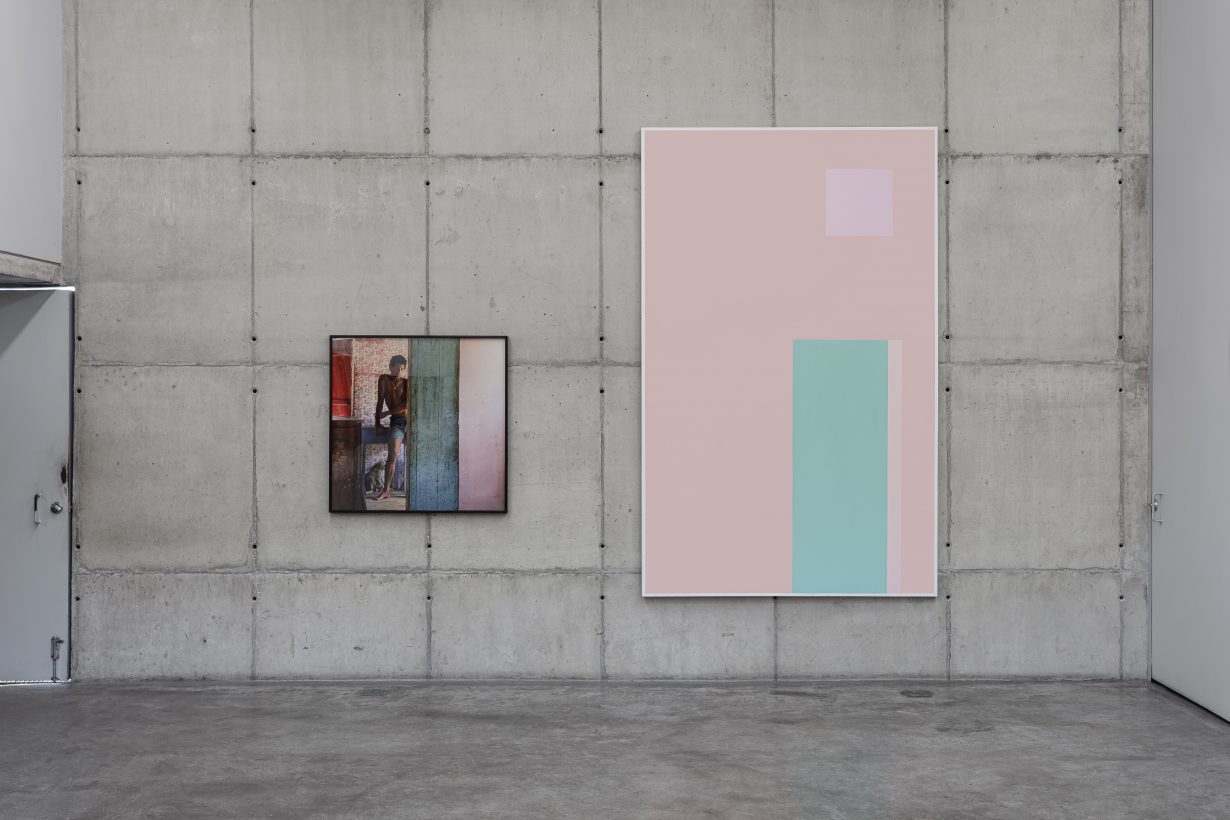Colorista repositions Braga’s work, often criticised as exploitative of traditional and mixed-heritage groups, in a transgenerational dialogue with geometric painting
On the sober concrete walls of Galeria Leme, 20 Luiz Braga photographs, made between 1982 and 2023, erupt in vigorous colour. They portray everyday scenes of life in the Brazilian Amazon: the interiors of itinerant circus tents and modest restaurants, vibrant facades decorated with Christmas lights and drapes that cover sofas or divide house rooms as doors. Braga is the most feted photographer from the region, having spent a 50-year career depicting local life through his characteristically candid documentary photos and early black-and-white studio portraits. To promote Braga as a colourist, a term born out of Renaissance debates about painting, the exhibition stages a transgenerational – and unnecessary – dialogue with two geometric paintings, one by Alfredo Volpi, an icon of the second generation of Brazilian modernism, and one by the contemporary artist Paulo Pasta.
Banquinhos no Guamá (1982) by Braga is a one-metre-square grainy Fujichrome photograph depicting the red-and-white barstools and tables ubiquitous to the region, captured arranged on a peeling blue deck leaning over – the title tells us – the Guamá River. Referencing the colours and the diagonal of the Pará state flags, it is typical of the interaction between colour, oblique perspective, repetition and rhythm foregrounded in this show. Hung alongside Volpi’s Untitled (1960), a smallscale tempera painting depicting little flags, the intention seems to demonstrate the sophistication of vernacular aesthetic systems when confronted with the painter’s ‘high-art’ modernism.

A similar juxtaposition occurs in the placement of Braga’s Rapaz e cão em Carananduba (1990) alongside Pasta’s Untitled (2021), a large vertical oil painting with minimal, geometrical shapes in pastel tones that suggest a facade with an open door and a high window. In Braga’s photograph, made with a Hasselblad camera, a boy, wearing nothing but shorts and a gold chain, is shown with a skinny dog at his bare feet, the animal resting dolefully against a wall covered in pink floral wallpaper. This intimate universe beautifully captures the languid atmosphere of Mosqueiro Island, evoking the region’s warm, humid air in the blue-painted wooden table the boy unpretentiously leans against, a palette echoing that of Pasta’s and matched by the colour fields formed by the door frame and a wall that, in the foreground, occupy half of the pictorial plane.

The cross-dialogue between Braga, Volpi and Pasta reiterates the obsolescence of visualidade amazônica (Amazonian visuality), a harmful concept pushed by thinkers such as art critic Paulo Herkenhoff from 1982 until this day, in an encyclopaedic attempt to systematise Brazilian art. Despite being fundamental to the valorisation of the art production of the region between the 1970s and 80s, the concept is used to generically label the practices of Amazonian artists, crushing their multiple subjectivities and suggesting they are unable to relate to artistic debates in other geographies. Braga’s work effortlessly proves otherwise, and yet the inclusion of the painted works suggests a lack of confidence on the part of those who conceived the exhibition – Braga is a colourist, and can prove it through photography, without the need of the crutches provided by the paintings.
Despite being born and raised in Belém, a city lying at the mouth of the Amazon River, with deep local family roots, Braga has also faced criticism from regional artists and thinkers. They argue that, not being from an Indigenous community or social minority, his art exploits images of traditional and mixed-heritage groups, such as the boy from Rapaz e cão em Carananduba and the melancholic woman in Amanhecer no Rio Amazonas (2022), lying in a scarlet hammock inside a boat bathed in artificial blue light. The works in Colorista underscore how portraiture of local people is far from being the primary subject of his practice, but instead his interest lies in showing the broader, formal, visual reality of his region. Despite its conceptual dead ends, the show honours the solidity of the visual traditions of the Amazon and their resistance to the fast-paced changes imposed by postcolonialism. Moreover, and perhaps in contrast to the apparent curatorial intentions, Colorista repositions Braga’s work using an urgent, fresher formal framework, reaffirming the autonomy of photography in relation to painting.
Colorista at Galeria Leme, São Paulo, 29 June – 10 August
